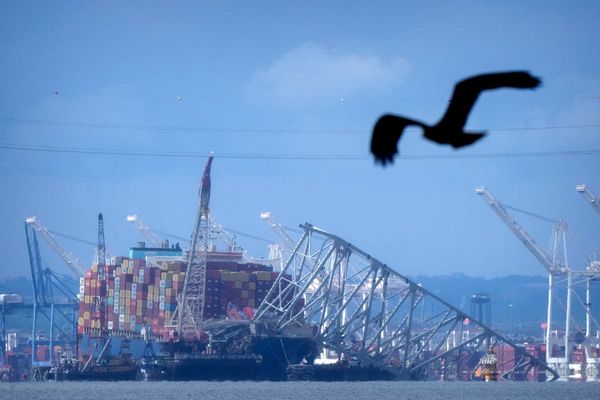
A Newcastle suicide prevention program will end in June unless the NSW government renews its funding.
The looming blow comes amid a rise in demand for suicide prevention training.
It also follows shocking figures that highlighted a "systemic failure" in preventing suicide in the Hunter.
LivingWorks Australia - based in Hunter Street - was awarded $10 million for suicide prevention training from 2022, under the government's program for mental health recovery from COVID.
The free training was aimed at high school peer leaders, teachers and support staff, parents, community groups and sports coaches.
The Minns government has not confirmed whether the program will be renewed.
LivingWorks Australia suicide prevention director Marc Bryant said the organisation had "seen unprecedented demand for suicide prevention training from schools, communities and first responders" since January.
He said demand for the training had "more than doubled in the first four months of the year, compared to the same period in 2023".
He compared the suicide training to CPR, hospital hygiene and fire safety training, skills that "need to be refreshed regularly".
He said numerous providers of LivingWorks training, including Batyr and Lifeline, would be affected by any funding shortfall.
The training provided "suicide intervention skills at scale across the state".
Health data shows 940 people died from suicide in NSW last year - including 23 people aged under 18, and 83 people aged 18 to 24.
Suicide is the leading cause of death among Australians aged 15 to 24.
The suicide prevention sector has highlighted that government money should go to the most productive programs.
"While there is often a focus on easy-to-see brands, the evidence shows we need a network of safety around individuals at risk," Mr Bryant said.
"The majority of those who attempt or die by suicide are not in the health system, they are all around us."
NSW Mental Health Minister Rose Jackson said "we want to be proactive in ensuring the community has the skills to identify issues of concern and intervene to support people who are struggling".
"Training programs are important in reaching that goal. Each and every one of us has the capacity and responsibility to play a role in our community, preventing the drivers of suicide," Ms Jackson said.
"In acknowledging the important role of training in suicide prevention skills, we also want to ensure our efforts to tackle suicide are comprehensive."
She said the government had committed to "establishing legislation to enshrine a whole-of-government approach to suicide prevention".
"We are currently working on this and will have more to say in due course. The NSW Budget 2024-25 is being developed now and will be announced in June."
Shocking Numbers
The Newcastle Herald reported last month that the Hunter New England district recorded 1331 suicides from 2012 to 2021.
This was the most suicides in a decade among the state's 14 health districts.
As previously reported, a psychologist said the data amounted to a "systemic failure" in the Hunter.
NSW Health data shows that regional and rural areas have the highest suicide rates per 100,000 people.
Dr Amanda Cohn, chair of a parliamentary inquiry into mental health care in NSW, has raised this issue in budget estimates.
"I understand that a large proportion of the state's funding for suicide prevention training is being delivered by LivingWorks," Dr Cohn said in a November estimates hearing.
In response, Ms Jackson told the hearing that "we do see significantly higher presentations of mental ill health and suicide in rural and regional NSW".
"It would be my expectation that programs that we are delivering are going to areas of highest need," Ms Jackson said.
LivingWorks Australia CEO Shayne Connell said "more than 25 per cent of the training this year is happening in high priority areas where there are high suicide rates", mainly in regional areas.
Mr Connell said LivingWorks had provided this training "collaboratively as we follow guidance and advice by the NSW Ministry of Health's data".
He added that pinpointing high priority areas in rural and regional areas "led to training at the right time in the right place".
Ms Jackson confirmed in estimates that the health ministry "provides LivingWorks with a list of targeted geographical areas of higher need, based on modelling, to prioritise delivery of training".
The modelling was based on "NSW Health data on emergency department presentations for self harm" or suicidal thoughts in young people.
Urgent Investment
The Black Dog Institute last month launched its "Fully Fund Mental Health in NSW" campaign.
It called on the Minns government to urgently invest in the state's mental health system.
It said mental health represented 15 per cent of the total burden of disease in NSW, but received only 5 per cent of overall healthcare funding.
Coinciding with that, the Newcastle Herald reported on the suicide of Stockton's Kahi Simon at age 20, which attracted widespread community concern.
He took his life five days after being discharged from a 10-day stint in Taree Hospital's mental health inpatient unit, after a failed suicide attempt.
NSW Health has a framework for suicide risk assessment.
"The goal of a suicide risk assessment is to determine the level of suicide risk at a given time and to provide the appropriate clinical care and management," the framework says.
However, Mr Bryant said risk assessments were an "inadequate measure" for suicide intent.
"Research tells us we can't predict the individuals who'll take their own life," he said.
"We need to ensure those young people who are thinking about suicide are all seen and heard."
The training taught people how to ask others about suicide and the importance of "a safety plan".
"For young people and middle-aged men in particular, it can appear that suicide deaths or attempts come out of the blue," he said.
"Most of them are not in contact with the health system.
"What this means is that we need people close to them, those touch-points, to have the necessary practical skills to ask directly if they're thinking of suicide."
The training helped people to direct those affected to "immediate safety and in some cases, further treatment and recovery".
Mr Connell said LivingWorks had trained more than 18,000 people with the NSW government funding.
With more workshops and online training, this number is estimated to reach 25,000 by the end of June - when the funding ends.
In The Schools
Mr Bryant said the NSW Department of Education's wellbeing team had promoted the training to public schools across the state.
"In the first quarter of the year, LivingWorks has trained over 25 schools including wellbeing teams, teachers and school staff," he said.
LivingWorks had also provided suicide training to more than 1200 NSW Police officers.
The need for suicide prevention training has also been highlighted at the federal level.
Suicide Prevention Australia's pre-budget submission for the 2024-25 federal budget lists five key recommendations.
The top recommendation was funding for suicide prevention training to "make it more accessible to key members of the community who commonly encounter people at risk".
- Support is available for those who may be distressed. Phone Lifeline 13 11 14; Mensline 1300 789 978; Kids Helpline 1800 551 800; beyondblue 1300 224 636; 1800-RESPECT 1800 737 732.







